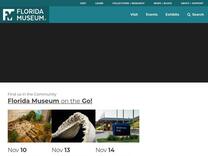Researchers use AI to create a treasure map of undiscovered ant species – Research News https://www.floridamuseum.ufl.edu/science/researchers-use-ai-to-create-a-treasure-map-of-undiscovered-ant-species/
E. O. Wilson once referred to invertebrates as “the little things that run the world,� without whom “the human species [wouldn’t] last more than a few months.� Although small, invertebrates have an outsized influence on their environments, pollinating plants, breaking down organic matter and speedin
With more than one million known species, insects alone vastly outnumber all other

